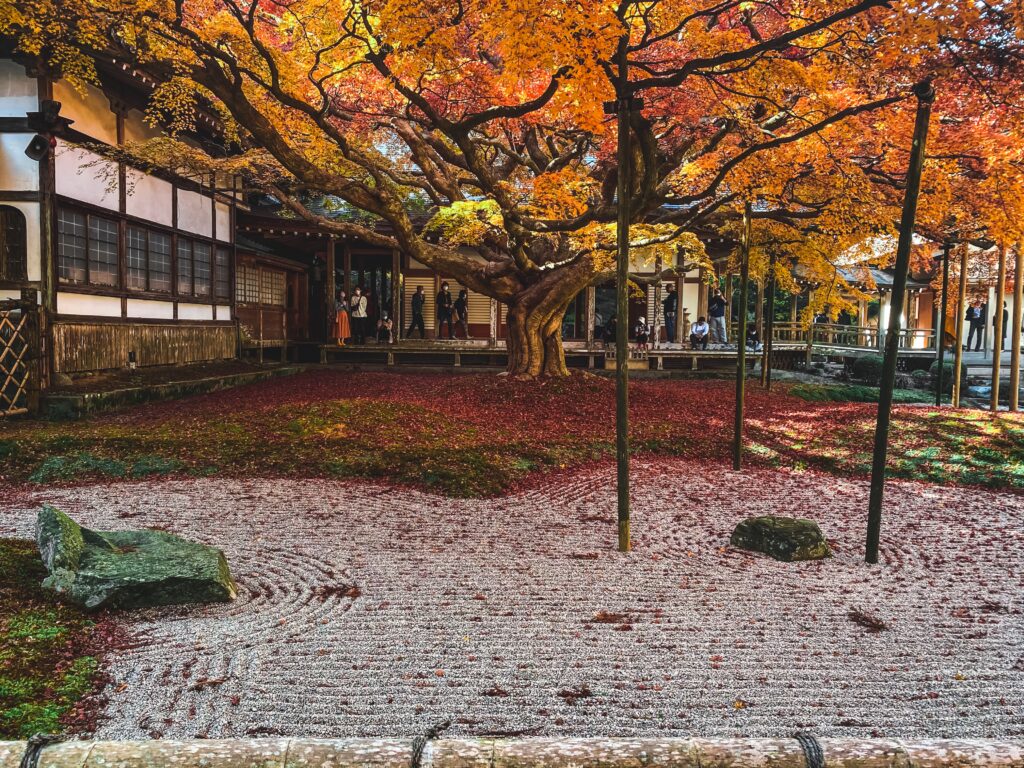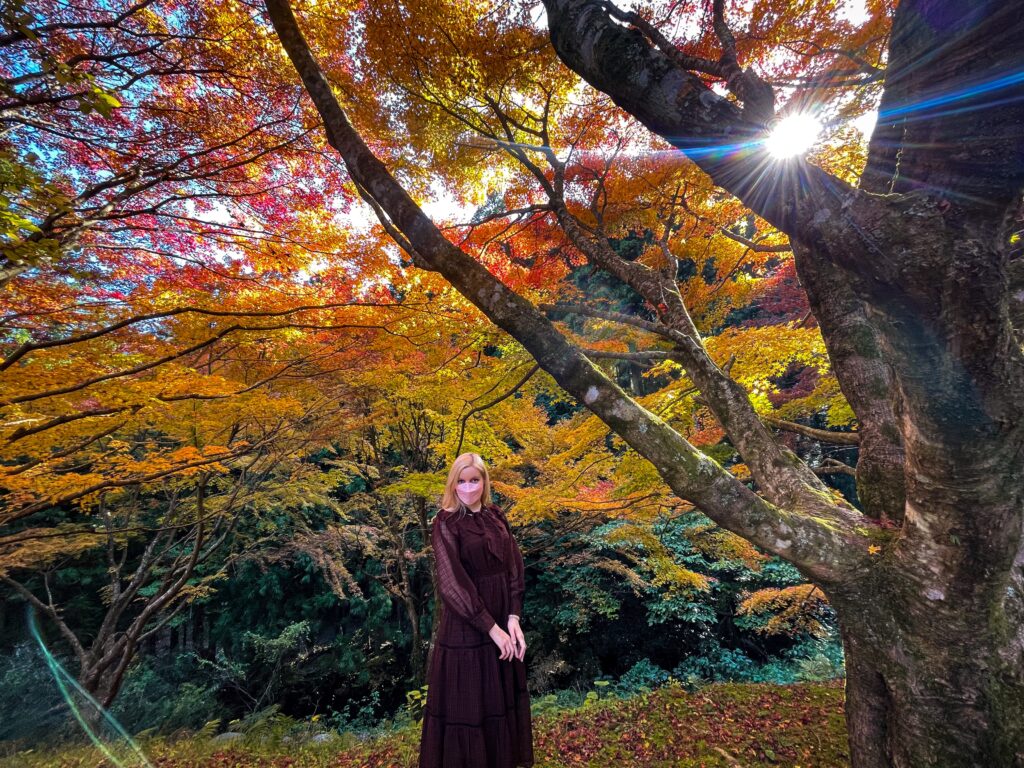

A zen temple, Sennyo-ji, proves that Fukuoka has nothing to envy Kyoto when it comes to the autumn colors season!



Sennyo-ji is a stunning zen Buddhist temple hidden in the forests of Itoshima, Fukuoka. It’s quite difficult to reach, even by a car, as the narrow and curvy mountain paths are sometimes unpassable. Expect a long line of vehicles, at least a 1 kilometer in front of the temple, during the momiji season.




The temple is located on a sacred mountain, Raizan, which literally means “a thunder peak” – a place associated with the god of thunder, one of the most powerful deities of Japanese culture. Moreover, the whole area has several smaller shrines and mysterious spots, as well as wonderful hiking trails. But, because nature has a quite strong presence over there, every traveler has to be cautious and considerate of the mountain spirits.



The giant maple tree of Sennyo-ji is a designated natural monument of the Japanese heritage. Since it’s always colder in the mountains than in the city center, it is better to visit Sennyo-ji a little bit earlier than the foliage appears downtown. The season doesn’t last long in the mountains either; so it’s very important to strategically choose the date of our autumn pilgrimage. This short window of the koyo-viewing goes perfectly with an old Japanese saying – ichigo-ichie (there’s only one chance to experience things as they are; we cannot encounter two identical moments in our lives, even if the surroundings have not changed).






The autumn foliage is called either momiji (referring to the red maple leaves) or koyo (yellow colors) in Japanese. The term momiji is maybe more familiar for the foreign visitors, however, koyo seems to be more popular in a common language of the locals. Autumn viewings are also not limited to the maple trees, but every autumn plant changing its color is equally celebrated.


What is also significant, the red maple leaves are actually harder to spot each year. It’s related with the glucose levels accumulated by trees. As the temperature and sunlight exposition is crucial for this process, hotter and dryer years produce less of the red pigment for momiji. Therefore, the famous autumn foliage of Japan might be another victim of global warming in the future. 2021 seen an exceptionally long summer and not too much rain in Kyushu. Even in November, the temperatures were still oscillating around 20 degrees. Such situation affected not only the koyo season, but also the vegetable prices at the supermarkets.












Sennyo-ji is belongs to the Shingon sect of zen Buddhism and it’s believed to be founded in the Nara period, around 725. It played an important role of a shelter for the local inhabitants during the Mongol invasions on Fukuoka. Even nowadays, people seek for a hospice here -praying for health during the special coronavirus-dedicated service. Sennyo-ji is also a destination for expecting parents, ensuring a safe delivery of their anticipated babies.

The main hall of Sennyo-ji was built in late Edo period (in 1753) by the Fukuoka feudal lord, Kuroda Tsugutaka, the sixth head of the influential Kuroda clan. Around 100 years later, his descendants took part in transforming the country into a modern empire, under a newly elected emperor Meiji.


Itoshima, a sleepy farming village at the Western seaside of Fukuoka, has been gaining a huge popularity lately, especially among the foreign residents, artists, and students. Kyushu University has its campus there, but that’s not the main attraction of the area. The locals emphasize Itoshima’s beautiful beaches, clean air, tasty vegetables and fruit, cheap rent, and easily achieved work-life balance. Time flows differently in Itoshima, where you can relax after work by sitting under palm trees and putting your legs in a crystal clear sea. Afterwards, you may stuff your stomach with super fresh seafood or organic veggies and meet with fellow artists to discuss upcoming projects. Itoshima is a small gem, yet to be discovered by big hotel chains and corporate offices.








It seems that Fukuoka is getting more and more lively these days, due to the pandemic. A lot of Japanese people had no choice, but to return to their Kyushu hometown, as remote work became more of a norm in such working hubs as Tokyo or Osaka. The price of land in Fukuoka is rising and more companies are moving here, creating workplaces and shifting workforce from Honshu. Fukuoka is indeed quite easy to live in, and considered by some as a paradise on Earth. It’s especially appreciated by foreigners, as this part of Japan has always been an international center, even during the sakoku isolation policy in the Edo period.


Fukuoka has a lot to offer, but there aren’t too many traditional places or temples left over here. It’s a very modern and peaceful city, and the citizens are not boastful of their heritage. It’s always interesting to discover a forgotten Shinto shrine or a kofun (ancient mound tomb) in my neighbourhood by accident. With a little effort, Fukuoka might become the capital city of Kyushu history. I’m looking forward to see what future brings.
















If you like this article, buy me a ramen or join me on Patreon! I don’t run any ads on my website so your support is the only way to keep it active ♡
